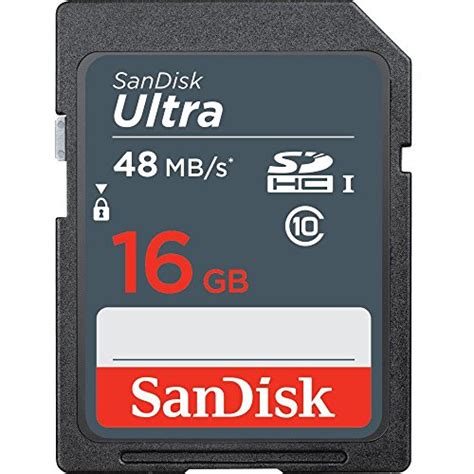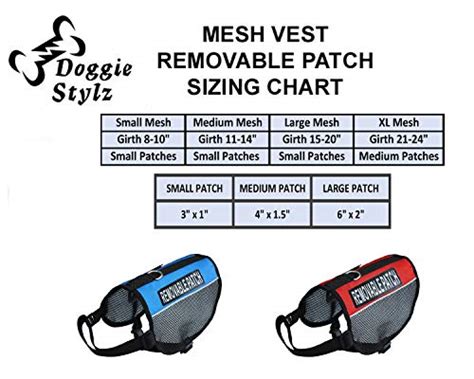
Triathlon combines three of the most popular sports, making it the ultimate endurance challenge for any athlete.
For many, the sprint triathlon is the gateway event to a fulfilling athletic career in triathlon.
Preparing for a sprint triathlon is multidimensional.
Most importantly, you need to become familiar with all three disciplines: swimming, biking, and running.
This 12-week training plan, consisting of four workouts per week, should answer all of your questions and will get you to the starting line feeling fit and prepared.
Before you start, you will need to gather the proper gear.
Thankfully, you do not need to break the bank on triathlon-specific equipment to do a sprint triathlon.
Chances are you already have enough gear lying around at home.
For a sprint triathlon, you do not need the most aerodynamic or lightest gear.
Especially if you are new to the sport, start with the bare minimum to see how you like training and competing first.
1) Swimsuit: This can be any comfortable swimsuit. Just make sure to avoid loose swimsuits to minimize drag. Most males wear tight briefs, while females generally wear a one-piece swimsuit.
2) Goggles: You must invest in well-fitting goggles to make heated open water swimming a bit more comfortable.
3) Swim cap (optional): Generally, the event will provide you with their own, but most triathletes will bring another just in case.
4) Towel: This will make your life a lot easier when putting on your bike and run outfit.
5) Shirt (and shorts): Most races require you to cover up your chest, any athletic shirt will work.
You do not need to wear anything over your swimsuit, but most athletes put on a pair of shorts, at least.
6) Running shoes: If your bike does not have clip-in pedals, you will need to put on a couple of running shoes at this point.
If there is one thing you should invest some money in, it is a proper pair of running shoes that fit your type of foot.
7) Bike: Any bike you currently have should work. If the course has a lot of off-roading, pick out a racebike with wider tires and more profiles. Conversely, if the course is on paved roads, pick out a bike with thin tires. 8) Helmet: No excuses here. Everybody needs to wear one.
You do not need any additional gear for this. Just sunscreen for a sunny day.
Read: Official Competition Rules Every Ironman Athlete Should Know About
The sprint triathlon consists of a 750-meter swim, 20 km bike and 5 km run. To finish competitively, you should ideally start training 12 weeks before your big race.
This program is divided into three macro training blocks, each with their focus points, and a recovery week. Training weeks consist of four different workouts ranging from 30 minutes to 90 minutes in duration.
If you want to optimize your performance and stay injury-free, you must follow these intensity levels and distances meticulously. Do not go too fast too soon, as this can jeopardize your training by risking injury.
The focus point of this training block is to get your body comfortable with training four times per week.
Most of the workouts will be at an easy pace to give your joints and muscles time to adjust to an increased training load, so that you can avoid injuries.
Additionally, there will be some short speed bursts to start developing the neuromuscular connections needed to maintain proper technique when you get tired.
Monday: Swim – 5’ WU, 12 x 25 drills, 15’ easy swim focusing on the proper stroke technique
Tuesday: Rest day
Wednesday: Bike – 30’ easy with 3 x 5’ at high cadence turnover (> 85 rounds per minute)
Thursday: Rest day
Friday: Run – 5’ WU, 20’ easy (alternate running with walking if you need to)
Saturday: Rest day
Sunday: Bike – 30’ easy with middle 15’ maintaining a high cadence
Monday: Swim – 10’ WU, 6 x 25 hard with 1’ rest, 15’ easy swim focusing on proper stroke technique
Tuesday: Rest day
Wednesday: Bike – 35’ easy with 3 x 6’ at high cadence turnover
Thursday: Rest day
Friday: Run – 5’ WU, 25’ easy focus on quick turnover (> 165 steps per minute) while going slow
Saturday: Rest day
Sunday: Bike – 10’ WU, 30’ easy with 5 x 1’ hard spread throughout
Monday: Swim – 10’ WU, easy ladder set 50-100-150-200-150-100-50 with plenty of rest in between each (up to 1’)
Tuesday: Rest day
Wednesday: Run – 5’ WU, 25’ easy with strides at the end
Thursday: Rest day
Friday: Bike – 45’ easy with 3 x 5’ at high cadence turnover
Saturday: Rest day
Sunday: Swim – 5’ WU, 16 x 25 drills, 15’ easy swim focusing on the proper stroke technique
Monday: Run – 5’ WU, 25’ easy focus on quick turnover (> 165 steps per minute) while going slow
Tuesday: Rest day
Wednesday: Bike – 10’ WU, 30’ consisting of 6 x (4’ easy with 1’ hard), 5’ CD
Thursday: Rest day
Friday: Swim – 5’ WU, 6 x 25 hard with 1’ rest, 20’ easy swim
Saturday: Run – 5’ WU, 25’ easy (alternate running with walking if you need to)
Sunday: Rest day
Read: The Triathletes Nutrition Guide for Greater Endurance
On average, it takes 90 minutes to complete a sprint triathlon; therefore, you need to have built a strong aerobic base.
The focus of this training block is to gradually increase volume by no more than 10% weekly up to a level where you can comfortably sustain a high effort level for an extended amount of time.
During this training, you will start doing “Brick” workouts, in which you will train two disciplines right after each other.
This is a crucial workout session for any triathlete, as it will make your legs feel a little less heavy on race day when starting your run after a bike ride.
Monday: Swim – 5’ WU, 12 x 25 drills, 20’ easy swim focusing on proper stroke technique
Tuesday: Rest day
Wednesday: Bike – 30’ easy, 15’ moderate, 5’ CD
Thursday: Rest day
Friday: Run – 10’ WU, 25’ moderate run on trails or rolling hills
Saturday: Rest day
Sunday: Brick – 30’ easy bike at high cadence directly followed by a 6-8’ easy run/walk
Monday: Swim – 5’ WU, 12 x 25 drills, 15’ easy swim focusing on proper stroke technique
Tuesday: Rest day
Wednesday: Bike – 60’ easy with 5 x 5’ at high cadence
Thursday: Rest day
Friday: Run – 10’ WU, 5 x 30” hill sprints, 20’ easy
Saturday: Rest day
Sunday: Brick – 30’ moderate bike at high cadence directly followed by a 10’ easy run
Monday: Swim – 5’ WU, moderate ladder set 50-100-150-200-300-200-150-100-50 with plenty of rest in between each (up to 1’), 5’ CD
Tuesday: Rest day
Wednesday: Bike – 30’ easy, 20’ moderate, 5’ CD
Thursday: Rest day
Friday: Run – 10’ WU, 30’ moderate run on trails or rolling hills with strides at the end
Saturday: Rest day
Sunday: Brick – 35’ moderate bike at high cadence directly followed by a 10’ easy run
Monday: Swim – 5’ WU, 8 x 25 hard with 1’ rest, 20’ easy swim focusing on proper stroke technique
Tuesday: Rest day
Wednesday: Bike – 70’ easy with 6 x 5’ at high cadence turnover
Thursday: Rest day
Friday: Run – 10’ WU, 6 x 30” hill sprints, 25’ easy
Saturday: Rest day
Sunday: Brick – 35’ moderate bike at high cadence directly followed by a 15’ easy run
Monday: Swim – 5’ WU, moderate ladder set 100-150-200-250-300-250-200-150-100 with plenty of rest in between each (up to 1’), 5’ CD
Tuesday: Rest day
Wednesday: Bike – 30’ easy, 25’ moderate, 5’ CD
Thursday: Rest day
Friday: Run – 10’ WU, 35’ moderate run on trails or rolling hills
Saturday: Rest day
Sunday: Brick – 40’ moderate bike at high cadence directly followed by a 15’ easy run
By now, you will have built a strong aerobic base, and it is (finally) time to incorporate some speed workouts.
The sessions in this training block will include the same four activities, but at a shorter distance and a higher intensity.
Monday: Swim – 10’ WU, 6 x 50 hard with 1’ rest, moderate ladder set 100-150-200-250-200-150-100 with plenty of rest in between each (up to 1’), 5’ CD
Tuesday: Rest day
Wednesday: Bike – 30’ moderate, 20’ hard, 5’ CD
Thursday: Rest day
Friday: Run – 15mins WU, 5 x 4’ hard with 1’ rest, 10’ very easy CD
Saturday: Rest day
Sunday: Brick – 30’ hard bike at high cadence directly followed by a 10’ moderate run
Monday: Swim – 10’ WU, 8 x 25 hard followed by 4 x 50 hard all with 1’ rest, 30’ easy swim focusing on the proper stroke technique
Tuesday: Rest day
Wednesday: Bike – 10’ WU, 3 x 10’ hard with 1’ rest, 5’ CD
Thursday: Rest day
Friday: Run – 10’ WU, 5 kilometer hard time trial, 10’ CD
Saturday: Rest day
Sunday: Brick – 35’ moderate bike at high cadence directly followed by a 15’ easy run
Read: Triathlon Injury Guide - How To Deal with Triathlete Injuries
The final week of the program is designed to let your body recover from all of the hard work you have put in thus far.
The workouts may seem easy, but that does not mean they are less critical.
Additionally, more than any other week, you need to make sure to stay well hydrated and eat healthy.
Monday: Swim – open water if possible: 10’ WU, 15’ moderate, 10’ CD
Tuesday: Rest day
Wednesday: Bike – 40’ easy with 4 x 5’ at high cadence turnover
Thursday: Rest day
Friday: Brick – 20’ moderate bike at high cadence followed by 10’ easy run
Saturday: Rest day
Sunday: RACE DAY!
Are you looking to take your training to the next level? Are you tired of running out of breath just before you reach the finish line? Muscle fatigue can limit your performance when your muscles are not supplied with a sufficient amount of oxygen.
Noticing how your muscles tighten and start to feel pain is the result of an anaerobic process. Still in need of fuel to keep up with the energy production needed for the body to work, your muscles will begin to produce lactic acid a byproduct. This process is also known as ATP and is the body's attempt to keep up.
Do not push your body to endure a painful anaerobic process. Training your lung muscles like any other muscle group will strengthen the lung muscles for a more efficient intake of oxygen. Combine your focused training program for the triathlon with the Airofit breathing trainer. The small device is easily connected to your smartphone, providing you with real-time data on your progress!
THE AUTHOR
Master's degree - Master of Physician Assistant Studies & Bachelor's degree in Human Biology with Health Science Emphasis. Former Belgian National Swimming Champion
Follow us on social media for the latest trends and activities. Share your training experience with the rest of the Move The Limit community and join the movement!
Breathing is an essential part of improving your performance as an athlete. Visit Airofit.com to learn more on how you can move your limit through respiratory training.
 Natural Colors Dog Park Commercial Intermediate Course
Natural Colors Dog Park Commercial Intermediate Course
 Dog Head Collar Adjustable And Padded No Pull Training Tool For Dogs On Wal
Dog Head Collar Adjustable And Padded No Pull Training Tool For Dogs On Wal
 Smead 100 Recycled Pressboard Classification File Folder 1 Divider 2quot Expan
Smead 100 Recycled Pressboard Classification File Folder 1 Divider 2quot Expan
 Classic Accessories Veranda Water Resistant 11 Foot Patio Umbrella Cover
Classic Accessories Veranda Water Resistant 11 Foot Patio Umbrella Cover
 Sandisk 16 Gb Class 10 Sd Hc Ultra Flash Memory Card 10 Pack Bundle With
Sandisk 16 Gb Class 10 Sd Hc Ultra Flash Memory Card 10 Pack Bundle With
 Fairwin Braided Leather Dog Training Leash 6 Foot 56 Foot Military Grade H
Fairwin Braided Leather Dog Training Leash 6 Foot 56 Foot Military Grade H
 3m Reflective Dog Leash 5ft Long With Traffic Padded Handle Dog Training Leas
3m Reflective Dog Leash 5ft Long With Traffic Padded Handle Dog Training Leas
 How To Be Your Dogs Best Friend The Classic Training Manual For Dog Owners
How To Be Your Dogs Best Friend The Classic Training Manual For Dog Owners
 Classical Naptime For Tots
Classical Naptime For Tots
 Doggie Stylz Set Of 2 Reflective Therapy Dog In Training Removable Patches Wit
Doggie Stylz Set Of 2 Reflective Therapy Dog In Training Removable Patches Wit
 6 Pcs Service Dog In Trainingworkingstress Amp Anxiety Response Embroidere
6 Pcs Service Dog In Trainingworkingstress Amp Anxiety Response Embroidere
 Service Dog In Training Patch With Hook Back And Reflective Lettering For Servic
Service Dog In Training Patch With Hook Back And Reflective Lettering For Servic














